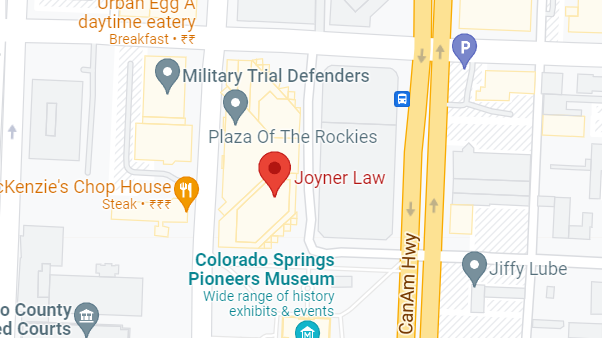As a motorcyclist, your rider’s kit is not complete without a motorcycle helmet. It protects your head from injuries in case of an accident, road debris, and other elements. Sadly, many motorists often neglect their helmets, forgetting to replace them when they are due.
The question then arises of how often you need to replace your motorcycle helmet. While the general rule of thumb is 3-5 years for helmets that haven’t had any accidents or significant impact, several other factors come into play. Legal experts from an El Paso County criminal defense law firm explain the factors to consider when replacing a motorcycle helmet.
Do Motorcycle Helmets Expire?
Motorcycle helmets can appear to be in good shape from the outside, but the truth is that the value of their integrity is hidden underneath the outer shell. Helmets have a limited lifespan because the materials and resin used in manufacturing them wear out over time. Factors like ultraviolet light, humidity, hair oils, and body oils gradually compromise the quality of helmets.

If you get involved in a motorcycle crash, your personal injury lawyer in Colorado Springs may advise you to replace your helmet despite its lifespan. A helmet may look fine after an accident, with the outer plastic bouncing back to its normal appearance. However, the interior foam may be damaged in a way you can’t detect immediately. Once the foam is compressed, the safety margin reduces.
Do I Need to Replace My Motorcycle Helmet If I Drop It?
Generally, you don’t need to replace your motorcycle helmet when you drop it. That’s unless it falls from a significant height and gets damaged to the extent that you need a new one. Helmets are designed to protect you in a crash, hence are pretty robust and will withstand the impact of a drop in most cases.
However, you might need to check how far it fell and rolled. Check for cracks on the foam, which may be small and hard to see. Any sign of a cracked shell or foam indicates that you should replace the helmet.
Remember that your helmet is a priority in motorcycle safety and your first line of defense if you ever get into an accident. If you ignore replacing your helmet when replacement is due, you risk sustaining severe injuries in case of a crash. Talk to a Colorado Springs motorcycle accident attorney to determine if you can still file a compensation claim if another rider or driver was at fault.
What Are the Signs That I Should Replace My Motorcycle Helmet?
Most helmet manufacturers offer a 5-year warranty, indicating that the helmet is effective enough for those years. However, that depends on how often you use it, how well you maintain it, and whether it has been in an accident.

While the 5-year period is a good guideline, it shouldn’t be the bottom line. Here are other things you need to check to determine if it’s time for a replacement.
Chin Strap
Regular helmet usage wears off the chin strap, and the last thing you want is for the strap to fail when you need it the most. The chin strap makes it possible to lock the helmet in place and prevents it from moving when you get into an accident.
If the material begins to fray or comes apart, you may want to consider replacing the straps or getting a new helmet altogether. Always check that the strap fits well each time before you hit the road.
EPS Liner
Expanded polystyrene (EPS) or Styrofoam is the material most manufacturers use for the inner liner. It forms one of the most crucial components of the helmet’s overall build, forming the layer between the outer shell and inner padding. Since it’s not removable from the helmet, you can’t replace it on its own.
Like experts from a criminal defense law firm in Colorado Springs would tell you, your best bet would be to replace the helmet.
Glue
A helmet can expire when the glue holding the various layers loses its integrity. It deteriorates due to chemicals, oils, sweat, and cosmetics. When the layers come apart, they pose a greater risk of injuries during an accident, so you must check that the glue is intact.
Inner Padding
The inner padding cushions your head against the helmet’s hard interior and usually wears off faster than other parts. If the foam insert is of lower quality material, it can fall apart after just a few months. Avoid the temptation to use a motorcycle helmet with worn-out or missing inner padding. Your ride will be uncomfortable, and the impact will be more significant if you get into an accident.
Outer Shell
The outer shell degrades when exposed to weather elements for a long time. Be on the lookout for faded colors and materials that have turned into a dull yellowish color. These are indicators that the sun has degraded the quality of the outer shell, and you should replace the helmet. Also, remember to check it for fractures, cracks, and other structural issues.
What if I Still Like My Helmet?
You may still want to retain your helmet for various reasons, especially if you have cared for it well over the years. However, if it has hit the 5-year mark and you use it regularly, you may want to consider replacing it, no matter how good it looks at a glance.

A new helmet will likely offer unique technology, better style, and more ventilation, which are good reasons to replace your helmet.
A Personal Injury Attorney Providing Legal Counsel on Your Rights and Responsibilities
Your helmet should always be in good condition to protect your head from the impact of a crash if you get into an accident. That’s why experts recommend replacing it every five years, depending on usage. You can look for worn-out parts and signs of degradation that show it’s time for a replacement.
At our law firm, we provide legal representation for victims of motorcycle accidents and help them fight for compensation from the at-fault driver. We can investigate the impact of the crash and put together a report for a strong case. Contact us to schedule a FREE consultation with an experienced personal injury attorney in Colorado Springs.









